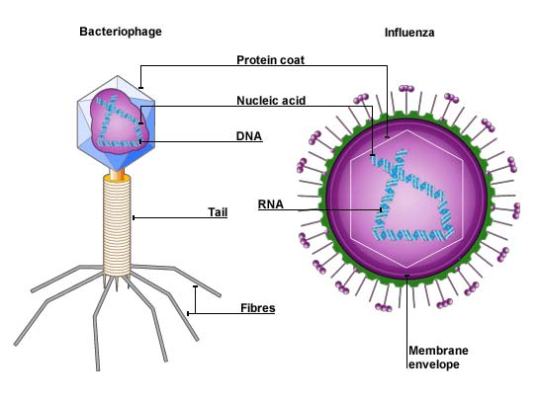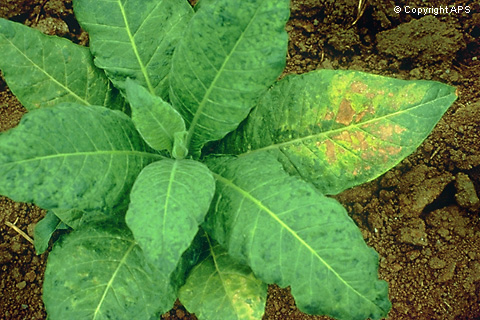Viruses: A* understanding for iGCSE Biology
Viruses appear in your syllabus in a section entitled “Variety of Living Organisms”. This is rather unfortunate because of course viruses are not classified as living organisms at all. The reason they are not alive is simple: they are not made of cells and they are incapable of carrying out any metabolic reactions. Viruses are much smaller than any cell, even very small prokaryotic cells such as bacteria.
In the diagram above you can see in the top right of the picture part of a red blood cell. Red blood cells are one of the smaller cells in the human body. The bacterial cell at the bottom of the diagram E.coli is much smaller, and all the blue viruses are much much smaller still. [The units of length on this diagram are nanometers (nm) – a nanometer is 10-9 m]
All viruses are parasitic as they have to infect a living cell in order to reproduce.
What are viruses made of?
Well remember viruses are not made of cells. The individual virus particles are called virions and are simply made up of a protein coat (called a capsid) that encloses some genetic material. The genetic material in a virion can either be DNA or a similar molecule called RNA.

Viruses can infect all different kinds of living organisms. The virus on the left in the diagram above is called a bacteriophage and it infects bacterial cells. You can see the protein coat is arranged into a head, tail and fibres and the genetic material in a bacteriophage is DNA. The virus on the right is the Influenza virus that infects mammals and birds, causing the disease influenza or “flu”. Influenza virus is an RNA virus.
Many human diseases are caused by viral pathogens. Influenza is one (see above) and the other one mentioned in the syllabus is HIV – a virus that causes the diseases AIDS. HIV is also an RNA virus. [HIV stands for Human Immunodeficiency Virus and the disease AIDS is acquired immunodeficiency syndrome.]

Some viruses infect and cause disease in plants. Tobacco Mosaic Virus infects tobacco plants causing yellow leaves as chloroplasts are not formed correctly in the leaves.

This is a diagram of a Tobacco Mosaic Virus

So to summarise:
- Viruses are not made of cells but are made of tiny particles called virions
- Viruses are not alive
- Virus can cause disease in a whole variety of different organisms – animals, plants, bacteria etc.